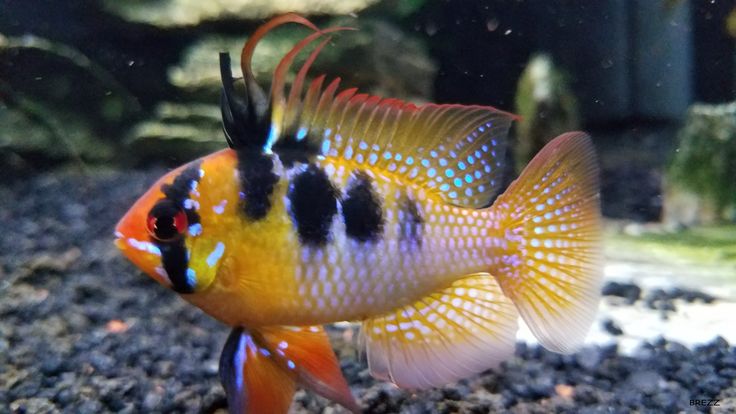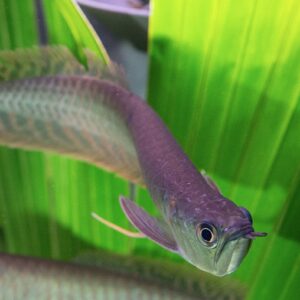German Blue Ram
Earn 1.50 Reward Points
₱150.00
Out of stock
Your live fish may not match the image shown due to natural variations in each species. Each companion animal is different in shape, color, and personality.
Scan to Purchase
The German Blue Ram (Mikrogeophagus ramirezi), often referred to simply as the “Ram,” is a popular and beautiful freshwater aquarium fish. To ensure the well-being of your German Blue Ram, here’s a care guide:
Aquarium Setup:
1. Tank Size:
– A minimum tank size of 20 gallons is recommended for a pair of German Blue Rams.
– Provide additional space for larger groups or community setups.
2.Water Parameters:
– Temperature: 78-85°F (26-29°C)
– pH: 6.0-7.5
– Hardness: Soft to slightly hard water (2-15 dKH)
3. Filtration:
– Use a quality filtration system, and ensure good water flow without strong currents.
4. Substrate and Decor:
– Fine sand or smooth gravel substrate is preferred.
– Include hiding spots, caves, and plants (live or artificial).
– Driftwood and rocks can mimic their natural habitat.
Feeding:
1. Diet:
– German Blue Rams are omnivores. Offer a balanced diet with high-quality flakes, pellets, and live or frozen foods.
– Include protein-rich foods like brine shrimp, bloodworms, and daphnia.
2. Feeding Schedule:
– Feed small amounts multiple times a day to mimic their natural feeding behavior.
Health and Maintenance:
1. Tank Maintenance:
– Conduct regular water changes (20-30% weekly) to maintain water quality.
– Vacuum the substrate to remove debris.
2. Monitoring Health:
– Watch for signs of illness, such as changes in color, lethargy, or abnormal behavior.
– Quarantine new fish before introducing them to the main tank.
Behavior and Compatibility:
1.Temperament:
– German Blue Rams are generally peaceful but can become territorial during breeding.
– Avoid keeping them with aggressive or fin-nipping species.
2. Tankmates:
– Compatible tankmates include peaceful community fish like tetras, rasboras, and other non-aggressive cichlids.
Breeding:
1. Breeding Conditions:
– Provide flat surfaces like broad leaves, rocks, or inverted flowerpots for potential breeding sites.
– Maintain slightly warmer water (around 82-86°F or 28-30°C) for breeding.
2. Parental Care:
– German Blue Rams exhibit excellent parental care. After spawning, the parents will guard and protect the eggs and fry.
Common Issues:
1. Disease Prevention:
– Quarantine new fish to prevent the introduction of diseases.
– Maintain good water quality and avoid sudden changes in water parameters.
2. Stress Management:
– Minimize stress factors, such as sudden changes in lighting or water conditions.
– Provide adequate hiding spots to help the fish feel secure.
By following these care guidelines, you can create a suitable environment for German Blue Rams, allowing them to thrive and display their vibrant colors and interesting behaviors.
| Size | Juvenilles, Adults |
|---|
Related products
-
Arowana (Silver)
Earn 8.00 Reward Points₱1,500.00Original price was: ₱1,500.00.₱800.00Current price is: ₱800.00. Read more -
Tiger Barb (GloFish®)
₱35.00 – ₱120.00 Select options This product has multiple variants. The options may be chosen on the product page -
Platinum King Balloon Molly
₱2,500.00Original price was: ₱2,500.00.₱600.00Current price is: ₱600.00. Select options This product has multiple variants. The options may be chosen on the product page -
Bronze Corydoras
Earn 0.50 Reward Points₱65.00Original price was: ₱65.00.₱50.00Current price is: ₱50.00. Add to cart









